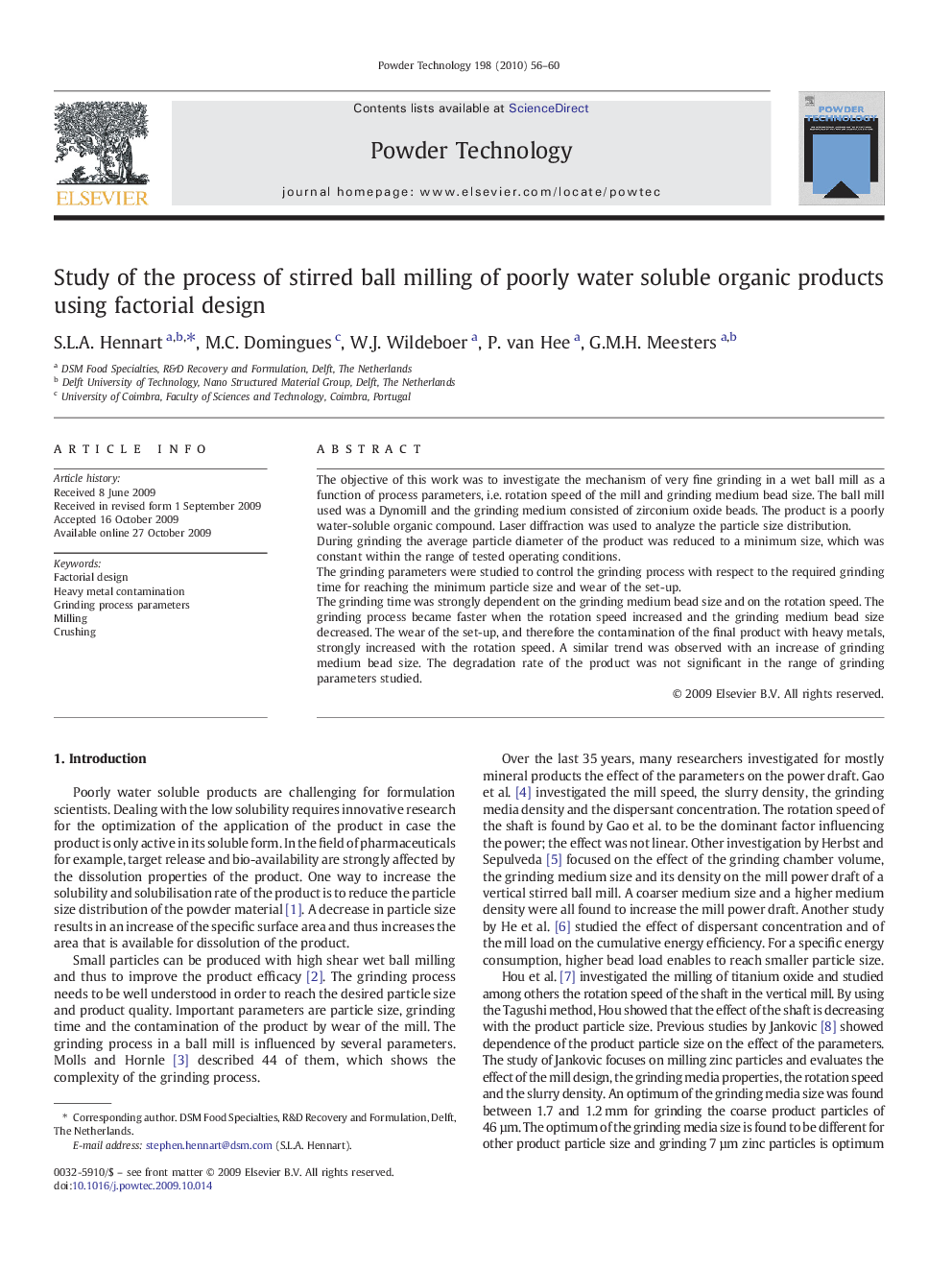| Article ID | Journal | Published Year | Pages | File Type |
|---|---|---|---|---|
| 238367 | Powder Technology | 2010 | 5 Pages |
The objective of this work was to investigate the mechanism of very fine grinding in a wet ball mill as a function of process parameters, i.e. rotation speed of the mill and grinding medium bead size. The ball mill used was a Dynomill and the grinding medium consisted of zirconium oxide beads. The product is a poorly water-soluble organic compound. Laser diffraction was used to analyze the particle size distribution.During grinding the average particle diameter of the product was reduced to a minimum size, which was constant within the range of tested operating conditions.The grinding parameters were studied to control the grinding process with respect to the required grinding time for reaching the minimum particle size and wear of the set-up.The grinding time was strongly dependent on the grinding medium bead size and on the rotation speed. The grinding process became faster when the rotation speed increased and the grinding medium bead size decreased. The wear of the set-up, and therefore the contamination of the final product with heavy metals, strongly increased with the rotation speed. A similar trend was observed with an increase of grinding medium bead size. The degradation rate of the product was not significant in the range of grinding parameters studied.
Graphical abstractThe objective of this work was to investigate the mechanism of very fine grinding in a wet ball mill as a function of process parameters, i.e. rotation speed of the mill and grinding medium bead size. The grinding parameters were studied to control the grinding process with respect to the required grinding time for reaching the minimum particle size and wear of the set-up.Figure optionsDownload full-size imageDownload as PowerPoint slide
